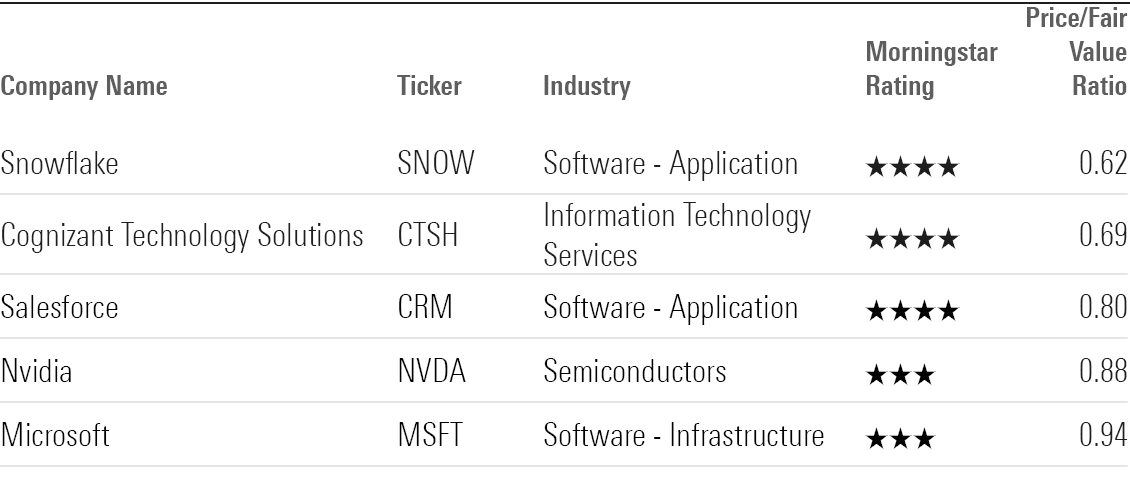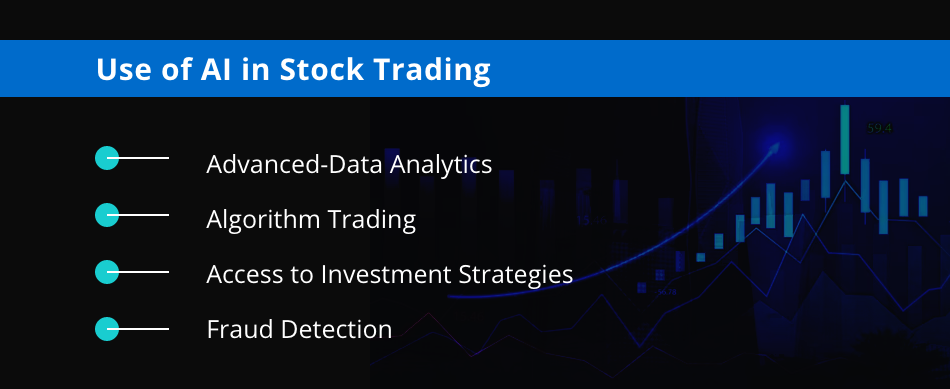20 Best Tips For Deciding On AI Stock Prediction Websites
Top 10 Suggestions For Evaluating The Interface For Users And User Experience Of Ai Analysis And Prediction Of Trading StocksThe User Interfaces (UI) and the User Experiences (UX) of AI-powered stock trading platforms are crucial to their efficiency, usability, overall satisfaction, and success. A poorly-designed interface can inhibit the process of making decisions, even when AI models that underlie it are reliable. Here are ten top suggestions to test the UX/UI on these platforms.
1. Evaluation of the intuitiveness and ease of use
Navigation: The platform must be simple to use. It should be clear buttons, menus and workflows.
Learning curve - Determine the speed at which a user is able to grasp the platform and understand the platform without a lot of training.
Check for consistent design styles (e.g. color schemes and buttons) across all platforms.
2. Make sure you check for customizability.
Dashboard customization - Verify that dashboards are customizable by users with pertinent charts, metrics, and data.
Layout flexibility is crucial: Make sure you can alter the arrangement and size of charts or widgets as well as tables.
Themes and preferences: Check whether the platform has dark or light styles or other options for visuals.
3. Visualize Data
Chart quality: Make sure the platform provides high-quality, interactive charts (e.g., candlestick charts, line charts) with zoom and pan functionality.
Visual clarity - Check to determine if the data are clearly displayed using appropriate labels, legends, or tooltips.
Real-time update: Verify whether the visualizations automatically reflect changes on the market.
4. Test Responsiveness & Speed
Loading speed: Ensure that the platform is loading fast, even when there are huge datasets.
Real-time Performance: Check if your platform is able to handle data feeds with no lag.
Cross-device compatibility: Make sure that the platform is compatible with every device including mobile, desktop and tablet.
5. Assess Accessibility
Look through the mobile application to see if it offers all the features you require to conduct business on the move.
Keyboard shortcuts. Ensure that your platform is compatible with keyboard shortcuts.
Accessibility features: Make sure that the platform meets accessibility standards (e.g. screen reader support, high contrast modes).
6. Search and Filter Test functionality
Search effectiveness: The platform should enable users to search quickly for stocks, indices and other assets.
Advanced filters: See if users can apply filters (e.g. by market cap, sector and performance indicators) to narrow results.
Searches saved to your account - Check that the platform allows you to save frequently-used filters or searches.
7. Look for Alerts or Notifications
Customizable Alerts: Users may create alerts based on specific circumstances, like price thresholds and spikes in volume and news happenings.
Notification delivery - Verify whether alerts are being delivered via multiple channels.
Timing - Ensure whether alerts are sent out promptly and accurately.
8. Evaluation of Integration with Other Tools
Integrating brokers is essential for a smooth trade execution.
API access: Find out whether the platform allows API access for users who are advanced to build customized workflows or tools.
Third-party integrations : Determine whether the platform is compatible with other software, like Excel Google Sheets or trading bots.
9. Evaluate Help and Support Features
Onboarding Tutorials: Verify if your platform offers tutorials or guides for new users.
Help Center: Make sure the platform offers a comprehensive and well-organized help centre.
Customer service: Check to see if the platform provides prompt customer service.
10. Test for Overall User Satisfaction
User feedback: Research reviews and feedback to determine general satisfaction of users with the platform's UX/UI.
Trial period - Get to know the platform in a free trial and see how it works.
Error handling: Check how the platform handles errors or edge instances (e.g., invalid inputs or server downtime).
Bonus Tips
Aesthetics. While functionality is a key element, an attractive design can greatly enhance the your overall experience.
Performance under stress: Make sure that your platform is stable and responsive during times of market volatility.
Forums and community Forums and communities: Find out if the platform has an online community or forum that allows users to exchange feedback and tips.
Follow these tips to assess the UI/UX for AI stock-predicting and analysis platforms. This will help ensure that they are efficient and user-friendly. They must also be aligned with trading needs. A great UI/UX can significantly enhance your ability to make informed decisions and efficiently execute trades. Check out the recommended ai trading tools tips for site examples including AI stock trading, ai trading, best ai for trading, trading with ai, using ai to trade stocks, best AI stock trading bot free, best AI stock, ai investing platform, ai for stock predictions, ai for investment and more.

Top 10 Tips On Assessing The Regulatory Compliance For AI stock Predicting/Analyzing Trading Platforms
When it comes to evaluating AI trading platforms, regulatory compliance is critical. Compliance assures that the system works within the legal frameworks, safeguards personal data of its users and adheres to the financial laws, reducing the risk of legal issues or financial sanctions. Here are 10 best tips to assess the compliance of these platforms.
1. Verify Licensing and Registration
Regulators: Check that the platform is certified and registered with relevant financial regulatory authorities (e.g. SEC in U.S.A., FCA UK, ASIC Australia).
Broker partnerships: Make sure that brokers that are a part of the platform are also properly licensed.
Public records: Check the website of the regulator to find the platform's registration status as well as any previous violations.
2. Assessment of the data privacy Compliance
GDPR In the event that you are operating or providing services to users in the EU Make sure the platform is compliant with the General Data Protection Regulation.
CCPA - California Consumer Privacy Act: Check for compliance with California users.
Policies for handling data. Examine the platform's privacy policy to ensure it clearly describes the manner in which user data is used to collect, share, and kept.
3. Evaluation of Anti-Money Laundering Measures
AML policies - Make sure that the platform's AML policies are strong and efficient to detect the existence of money laundering.
KYC procedures: Check whether the platform is following Know Your Customer (KYC) methods to confirm user identities.
Check the platform's transaction monitoring. Does it track transactions and report any suspicious activity to authorities?
4. Make sure you are in compliance with Trading Regulations
Market manipulation: Ensure the platform has safeguards to prevent market manipulation, such as spoofing or wash trading.
Order types. Verify whether your platform is in compliance with the regulations for orders.
Best execution: Make sure the platform follows the best execution practices, making sure that transactions are executed at the highest price available.
5. Assessment of Cybersecurity's compliance
Data encryption. Ensure your platform uses encryption to protect user data both in rest.
Incident response Response to incidents Verify the system's plans to take action in the event of cyberattacks or data breaches.
Make sure to check for any certifications.
6. Transparency Evaluation and Transparency Evaluation and
Fee disclosure: Ensure the platform clearly discloses any fees, hidden or additional charges.
Risk disclosure: Ensure that the platform has disclosed all risks, particularly in the case of high-risk strategies or trading using leverage.
Performance reports - Check to determine if there are precise and transparent reports on performance that are provided by the platform for its AI models.
7. Check for Compliance With International Regulations
Cross-border trading: If your trading involves international trade, you should make sure that the platform you use meets the requirements of each regulatory region.
Tax reporting: Verify whether there are any reports or tools available to assist you with the tax regulations.
Sanctions compliance: Ensure the platform adheres to international sanctions and is not allowing trading with banned entities or countries.
8. Review the record-keeping process and audit trails
Transaction records: Ensure that the platform keeps complete records of each transaction to be used for audits and regulatory purposes.
Recordings of user activity: Check whether the platform tracks user activity including logins or transactions as well as changes to the account settings.
Audit readiness: Determine whether your platform is able to provide the required logs and documentation in the case of an inspection from a regulatory authority.
9. Check for compliance with AI-Specific Regulations
Algorithmic trading regulations: If you are using a platform which supports algorithmic trading, ensure it is in compliance with relevant regulatory frameworks, such as MiFID II or Reg SCI, in Europe and in the U.S.
Fairness and Integrity: Determine whether the platform's AI models are monitored and controlled to ensure that they are not biased.
Explainability: Make sure the platform provides clear explanations for AI-driven predictions and decisions as required by certain regulations.
10. Review User Comments and Regulatory Historical History
User reviews: Conduct user research to evaluate the credibility of the platform regarding legal conformance.
Check the history of regulatory compliance to determine whether there have been any violations to the rules of regulation that were committed, and also fines and penalties.
Third-party Audits: Ensure that the platform is subject to third-party reviews to ensure the platform is in compliance with all applicable regulations.
Bonus Tips
Legal consultation: You may want to consult a legal expert to review the platform's compliance with pertinent regulations.
Trial period. You can use the trial or demo of the platform to try out its features for compliance.
Support for customers: Make sure the platform has support available for questions or issues with respect to compliance.
If you follow these guidelines that you will be able to assess the compliance with regulations of AI platforms for analyzing and predicting stocks making sure you select an option that is within the legal framework and safeguards your interests. Compliance with the law reduces risk to the public and builds confidence on the platform. See the most popular AI stock predictions for more advice including ai tools for trading, stock predictor, AI stock analysis, ai for trading stocks, how to use ai for stock trading, free AI stock picker, free AI stock picker, how to use ai for stock trading, ai investment tools, stocks ai and more.
